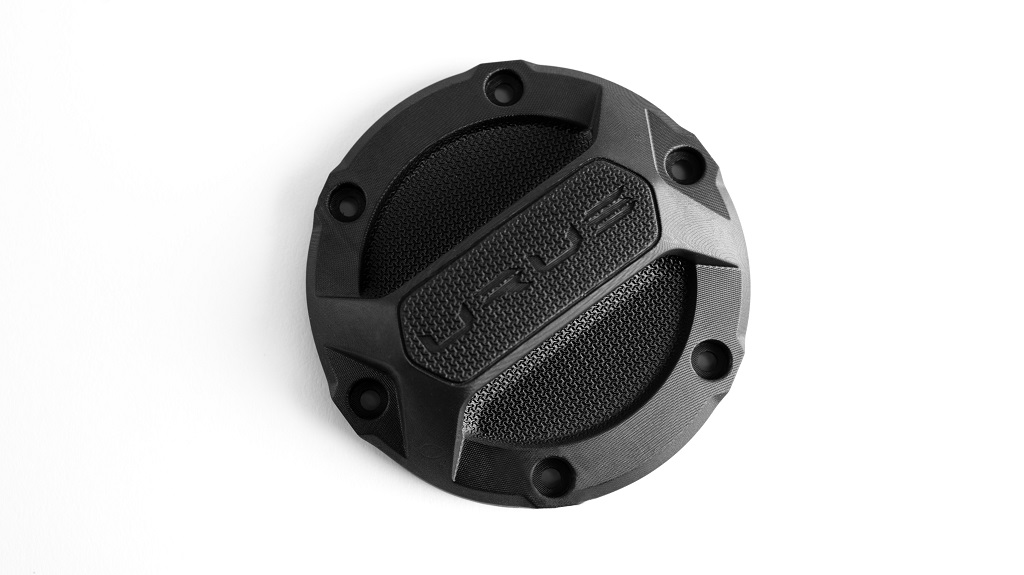![Lamborghini Urus Fuel Cover Cap digitally manufactured in EPX 82 epoxy resin [Image: Carbon]](https://fabbaloo.com/wp-content/uploads/2020/05/LamborghiniUrusFuelCoverCapdigitallymanufacturedinEPX82epoxyresin_img_5eb09d115e831.jpg)
Carbon continues to bring advanced 3D printing into play for end-use automotive parts, announcing a collaboration with Lamborghini.
Digital Light Synthesis (DLS) is showing that 3D printing is ready for manufacturing at scale. We’re just two months in to 2019 and already Carbon has been showing strong demonstrations of its drive toward large-volume production for end-use parts created via DLS. This month the company publicly unveiled its larger L1 3D printing systems that are used to create the midsoles for adidas’ FUTURECRAFT 4D shoes and now the athlete-specific helmet liners for Riddell. Last month, Carbon and Ford introduced an expansion of their partnership for automotive parts.
Carbon is back in the driver’s seat today with another announcement.
“The automotive industry shows significant promise for using digital fabrication for production at scale, and our partnership with Lamborghini is a perfect example of the kind of innovation you can achieve when you fuse design, manufacturability and engineering all into one,” said Dr. Joseph DeSimone, CEO and Co-Founder of Carbon.
Lamborghini is a brand synonymous with luxury. The Italian super sports car company introduced its Urus, a Super SUV, last year, and is now introducing that vehicle’s first production parts made with DLS tech. These initial forays are a textured fuel cap and an air duct clip component, as the two proved viable for 3D printing.
“Through our extensive procurement research, we found that many of our vehicle components were ideal candidates for digital manufacturing,” said Stefan Gramse, Chief Procurement Officer of Automobili Lamborghini S.p.A.
Lamborghini, working closely with Volkswagen’s Electronic Research Lab, is examining digital manufacturing for “many of the parts in its vehicle interior” that will be redesigned for new means of production.
As with the first digitally manufactured polymer production parts Ford is making, Lamborghini’s first DLS-made parts are made using Carbon’s Epoxy (EPX) 82. The resin has proven a strong asset for production applications, with high strength and durability, light weight, and the ability to stand up to high pressures and operating vehicles’ temperatures. Understanding its value for production, EPX 82 was among the resins that Carbon dropped bulk pricing on in a major move just a few months ago.
Automotive applications are proving a major market for 3D printing — and one that is increasingly sharing just how major. 3D printing has been used in the automotive industry for decades, but had generally been seen as a competitive advantage and not openly talked about. Several decades on, though, it’s helping automotive OEMs to share that they are indeed aware of and making use of advanced technologies. Especially as additive manufacturing expands beyond tooling and prototyping applications into scale production for parts that everyday drivers (well, everyday and super car drivers) will come into direct contact with, we can expect that such stories will continue to appear.
For Carbon, such stories are built not only from their viable technology solutions, but the deep relationships they develop with their customers/partners.
“By partnering with Carbon, we are designing on the means of production, which allows us to produce more durable products smarter, faster, and more efficiently, while also substantially accelerating our time to market. We are looking forward to a sustainable, successful partnership with Carbon,” Lamborhini’s Gramse said.
The subscription basis of Carbon’s installations of its M1, M2, and now L1 systems ensures that the company maintains deep ties with its user base. The systems are all networked, enabling frequent software updates and communication with the Carbon team.
It’s not just technology driving advanced manufacturing ahead; it’s the relationships behind them.
Via Carbon











Charles Goulding and Preeti Sulibhavi consider how two prominent automotive firms, Ferrari and Ford, are using 3D printing.